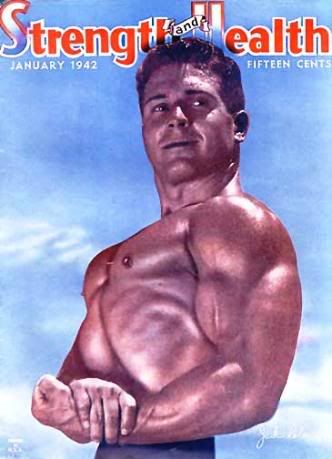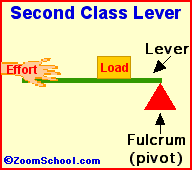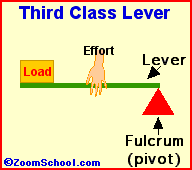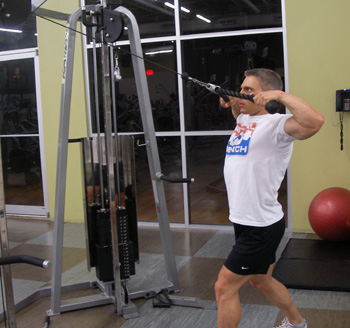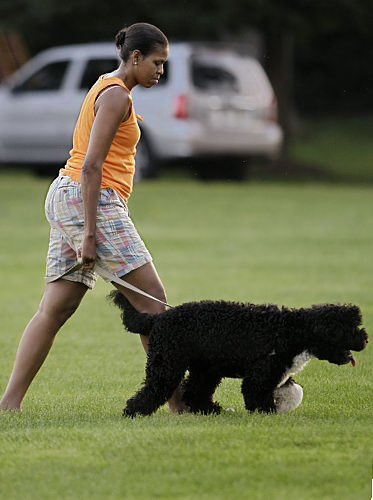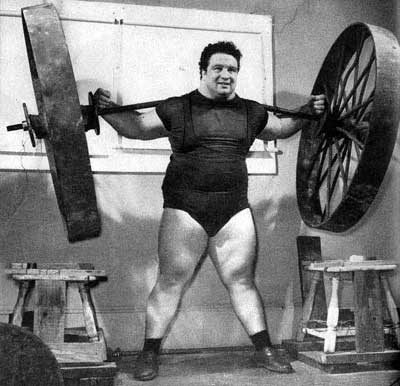
Paul Anderson is a bit of an anomaly in the strength training world. No, it's not just because equipment manufacturers couldn't make barbell sets heavy enough to give him a challenge. It's also because he was one of the few truly elite lifters in physical culture history that was also extremely religious. A very devout christian, after his he retired from competition, he founded a very successful home for troubled youth.
Historically, that kind of devotion to a religion hasn't been immensely popular in Western Physical Culture. We can all speculate as to why that is but I think that the answer is simple and much the same reason many others shun religion: they don't like to be told that what they're doing might be wrong. For example, Sandow could, and pretty much did, nail every available (and married) woman that attended his encore, look AND touch private show that he wanted. Depending on who you chose to believe, that list might have included a few men here and there too. The last thing he or any other good-looking muscular guy wants to hear is some bible-thumping holy man preaching the evils of promiscuous sex and adultery to them.
Anyway, strength trainers have a tendancy to be self-indulgent and self-absorbed. So, they avoid the divine wagging finger (for now?). Oddly enough, they kind of do have a religion and a church. Regardless of how they decide to tug on iron and to what end they hope to accomplish by doing it, I think that the case could be made that training has been turned into a religion.
Think about it for a moment. It doesn't take much of a stretch. They have their very narrow beliefs (their strength training protocol) that revolve around certain rituals and rites of passage (their competitions). They have their sacraments and/or magic potions that guarantee them divinity and enlightenment(supplements and PED's). They have their sacred relics (the iron and the machines they work out on). They also are very rigid in their whole outlook on things and will bitterly argue and deride any other differing views(Functional Strength Training vs. Oly vs. Bodybuilding vs Crossfit vs Powerlifting vs Bodyweight vs Strongman vs whateverthefuck) other than their own.
Above all, the salvation of strength must come from a gym. While they'd prefer it to come from their gym, they all agree that it has to come from working out in a gym. Otherwise, it's not possible to get strong. You don't have the relics, after all! That's the one that I challenge the most. Being told that I couldn't get strong without weights or a gym by my wife's ex-trainer lit a fire under my ass that burns pretty bright to this day, long after I accomplished what set out to do.
Although I'm known as a Bodyweight guy, I'm truly non-denominational. I've never had anything against weights, just that they cost money and they're not quite as easy to travel with. I look at the Earth as my gym. All I have to do is look at it with some imagination and I see my strength training relics. For example, take a look at this pic I just snapped at work on my phone...
What do you see?

A set of stairs, some railing and a doorway?
Geeze, you're boring! It's an exercise station where I can do the following stuff:
1. Pull-upsI'm guessing that you could easily make up two workouts based on this short list of exercises!
2. Chin-ups
3. Hanging Leg Raises
4. Hanging Windshield wipers
5. L-Sits
6. Dips
7. Feet-elevated Push-ups
8. Plyometric stair jumping
Wait just a minute...How can you get strong from that? How can you possibly make that work with a 5/3/1 or a 5x5 or an 8x6x7x5x3x0x9 routine? How could that help my bench? None of this is functional! Really? How horrid!
While I choose not to comment the need of a religion and/or a church for the spirit at the moment, I will say that I don't think one is needed for the body. Like religion for the spirit, I do think that it would suit people to take a step back and realize that they don't need to be so rigid and unforgiving in their strength belief systems. Why not focus on what they all have in common and in reality, what they have in common is more important than the differences. Those are lots of minor things that don't really amount to much. We all agree that doing really difficult movements with lots of intensity and/or speed will make us really strong. Why do we need to bicker about specific means to the end?
A quick walk around most religions also yields a conclusion that most of them aren't big on idolatry. It seems to have fallen out of style everywhere except strength training religions. Strength isn't dependent on having stuff. It's how you use what you have on hand (within reason) that makes the difference. Hell, I've spent the past three years talking about how I get strong with no implements at all (most of the time)!
Closed minds never solve anything. Not in the matters of the soul or the body. Strength is plastic. Malleable. So, the ways it's developed are much the same. So, the place that it's built isn't that important. The end does justify the means in this case. Get it however and where-ever you can.


